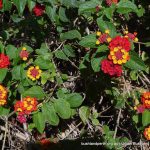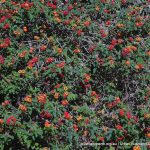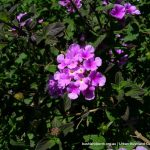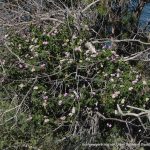Lantana
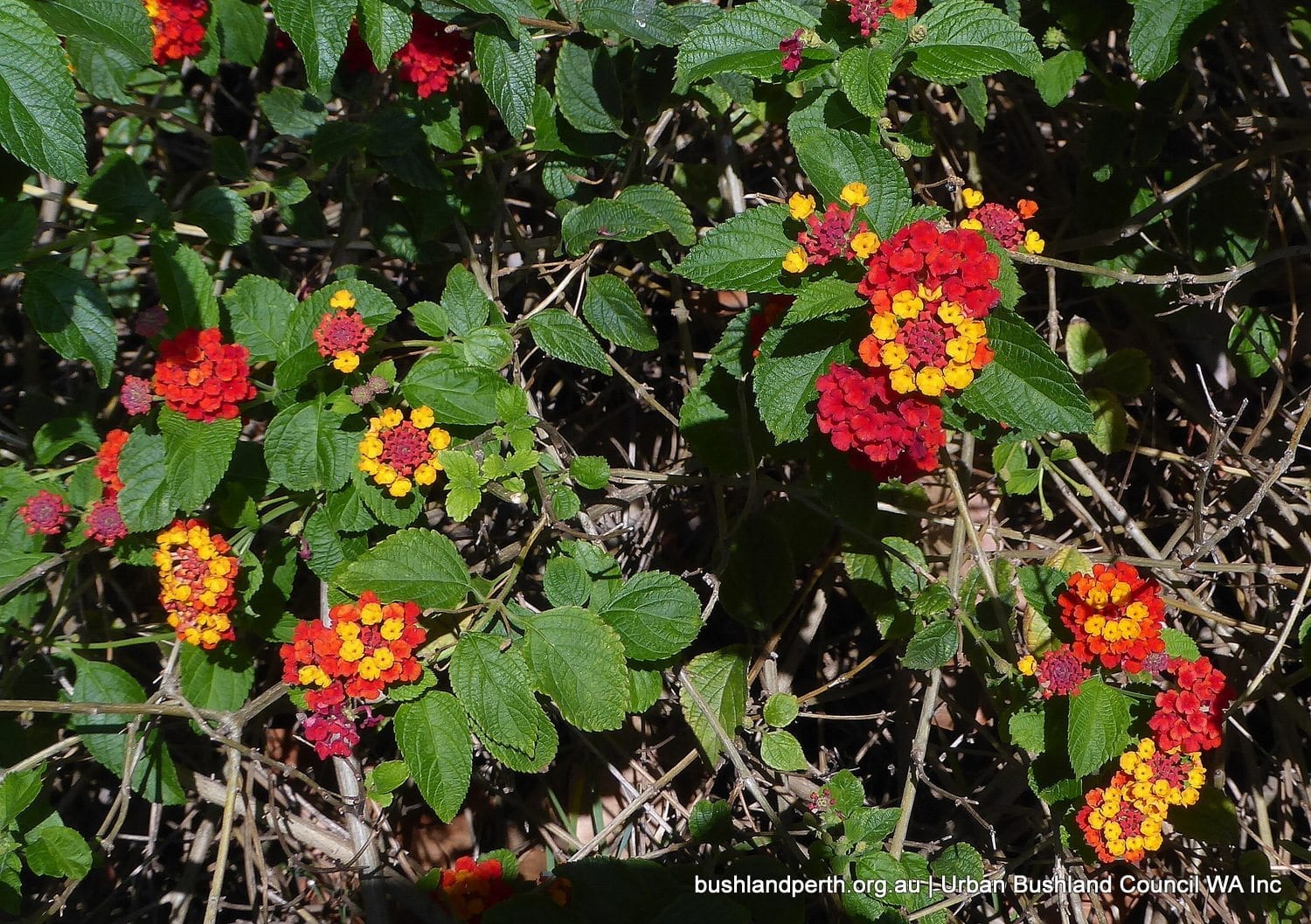
Common name
Lantana
Scientific Name
Lantana camara
Type of plant
Uncategorised
About this weed
This evergreen prickly climber is a member of the Verbena family and originates from tropical America. It was originally introduced as a garden plan and according to Florabase ‘is now considered one of the world’s 10 worst weeds’. It is a serious bushland weed.
Description
Lantana is a scrambling, prickly shrub or climber from 3 to 8 m high. It produces arching, spreading branches that can form a dense tangled mess. Masses of cream, yellow, pink, purple, orange or red flowers are produced from September to March. The black berries are spread by birds. It reproduces by seed, root suckering and stem layering. Plants may resprout after a cool burn, hot fire can kill plants.
Impact on Bushland
A serious bushland weed in a number of places. Lantana increases the total soil nitrogen and nitrogen availability and it has allelopathic properties. Naturalised populations have originated from various cultivated hybrids.
Location
Prefers sandy soils in moist areas mostly closer to towns or urbanised areas.
Priority for removal
High: major threat to the conservation values of Banksia woodlands.
Management (hand)
Biological control agents have been released in Australia.
Management (herbicide)
Apply 250 ml Access in 15 L of diesel to base 50 cm of stems (basal bark) or foliar spray with 1.5% Glyphosate. In some situations fire could be a useful tool to remove biomass, but follow up herbicide control will be required. Optimal treatment should be done in March, April and May but spraying can also be done occasionally in any other month.
Flowering month/s
January, February, September, October, November, December
Flower colour/s
Red, Yellow, Pink, Purple, Orange
Information source
https://florabase.dpaw.wa.gov.au/browse/profile/6733
Additional information
https://florabase.dpaw.wa.gov.au/weeds/swanweeds/ and https://florabase.dpaw.wa.gov.au/browse/profile/6733

